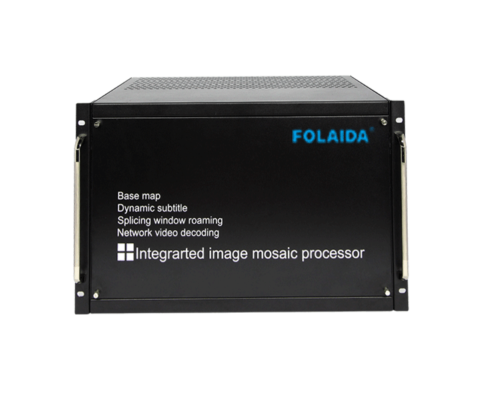When Do You Need A Video Wall Controller?
There are many approaches to drive video walls. Each has advantages and disadvantages. Video wall controllers are required when a customer needs more power and flexibility behind their video wall. They used to be a substantial cost component of the video wall, but have recently come down in cost to the point where they are much more affordable. In this article I will shed some light on those situations where it is helpful to include a video wall controller in your deployment.
To start, we need to understand how a video wall controller is different than a video wall scaler (tile-matrix scaler). A controller provides full control over a large number of displays to output perfectly synchronized content in a variety of configurations. A scaler, however, splits a single video stream into a grid and is limited in both resolution and layouts options. Many high-end, zero-bezel displays include a built-in scaler, but the end user is limited to using only compatible displays in a supported arrangement.
Today’s scalers have a variety of limitations, including the size or resolution of content they can handle. Even the best scalers are limited to 4K content resolution, and many handle only 1080p.
This leads us to the first instance where your video wall deployment needs a video wall controller. It’s especially true if now or in the future you want to scale beyond 4K source content to 6K, 8K or higher.
Another limitation with scalers is that they are limited to a single source. This brings us to another scenario where your deployment will need a video wall controller: If you want to allocate different sections of your video wall to different sources. These are often called “video wall zones” or “preset video wall zones.”
As demand for video walls grows, so too does demand for video walls with unique layouts, look and feel. If you are doing an irregular aspect ratio grid layout, such as a 1×5 or 1×10, many scalers do not handle this at all, and those that do are still limited to the original source resolution and look very poor quality.
In addition, the more advanced video wall controllers can also handle artistic, mosaic-style video walls. For a video wall with a non-standard configuration, a video wall controller is necessary because scalers are limited to only being able to output content to a grid-configured video wall — portrait or landscape.
Video wall controllers also give a lot more, well, control. If your project will require interactive content (i.e. a mix of HTML5, live TV, videos, etc.) or juggling multiple inputs and content sources simultaneously with ease and simplicity, a video wall controller is definitely needed. The best video wall controllers give customers an intuitive, GUI interface for management and configuration, as well as access to intuitive APIs to provide even greater control and flexibility.
The reason people have traditionally avoided video wall controllers has been the added cost and complexity. Traditional video wall controllers often cost up to $50,000 or even $100,000, and are often complex to order and integrate. Video wall controllers have historically required specialized hardware and software and have been complex to setup. However, there are now video wall controllers that eliminate these problems.
Instead of requiring a bulky proprietary appliance to handle demanding scenarios like 8K source content, video wall solutions turn a standard PC into a video wall controller. Software-based solutions also focus on making set-up and configuration simpler using intuitive GUIs.
If you want more control on your video wall and need more of the value beyond synchronizing a series of displays, you’ll need a video wall controller. Purchasing one won’t blow your project budget. It can save you money by reducing the cost of your displays. There are now choices for every budget.


